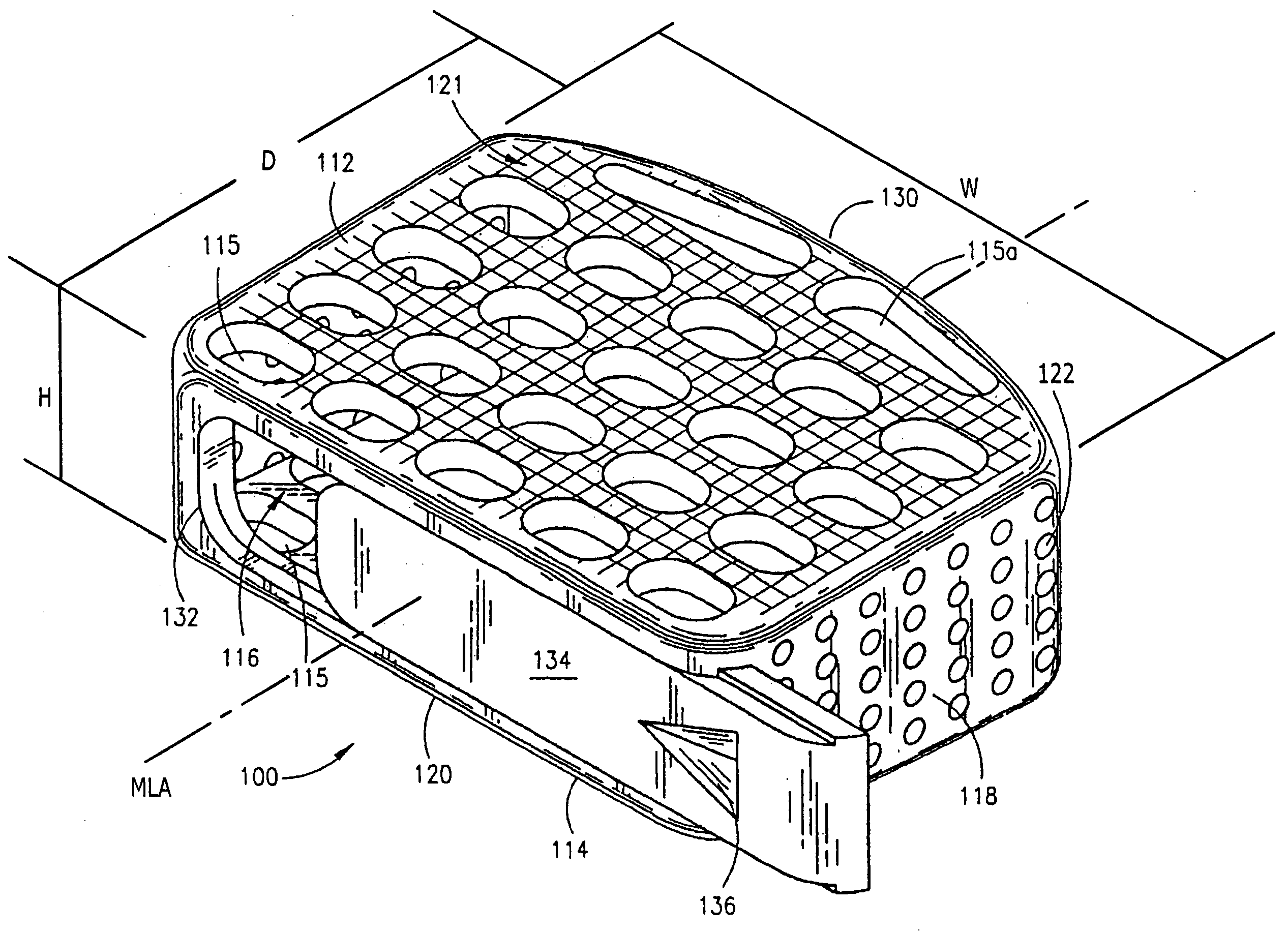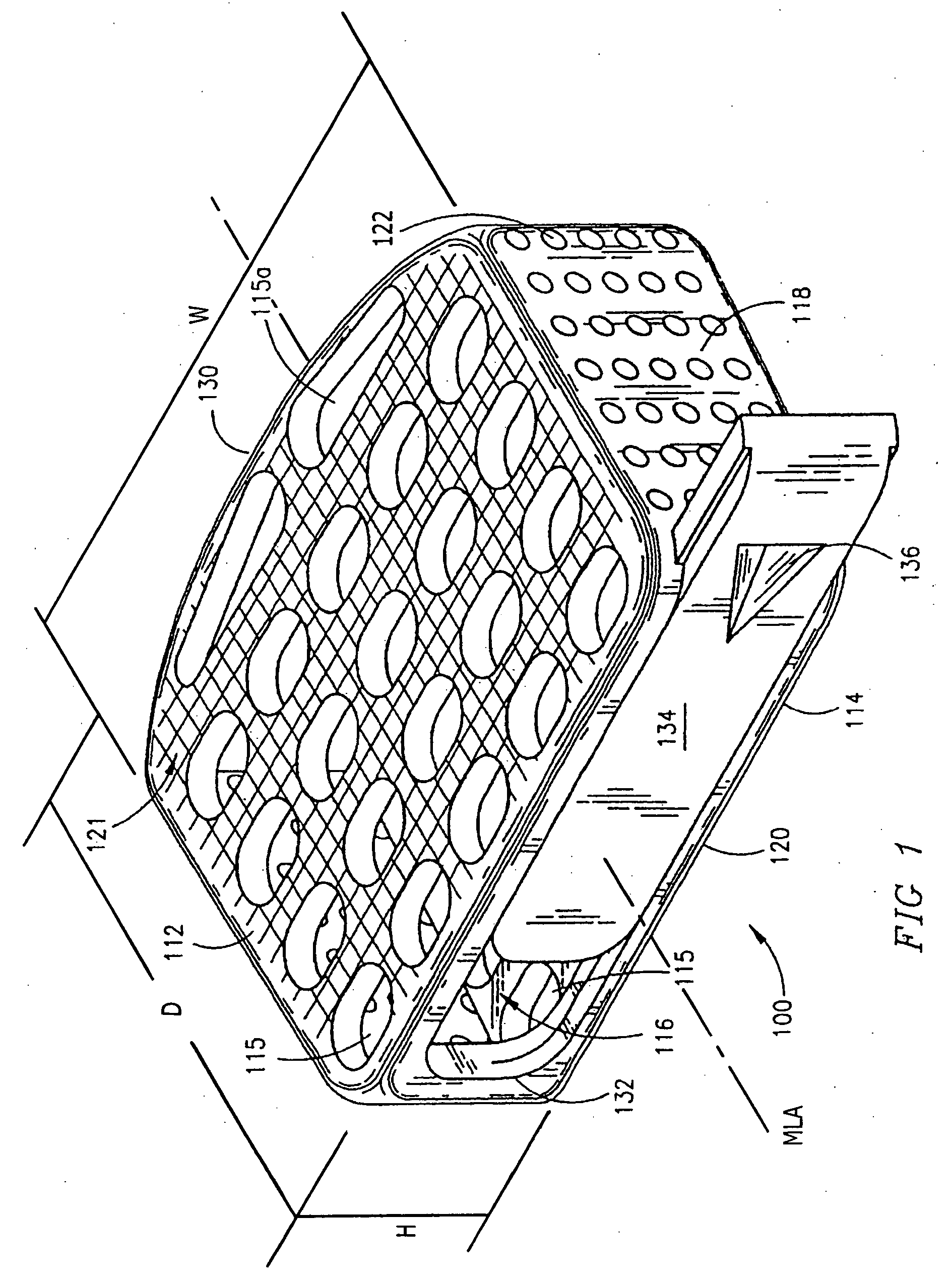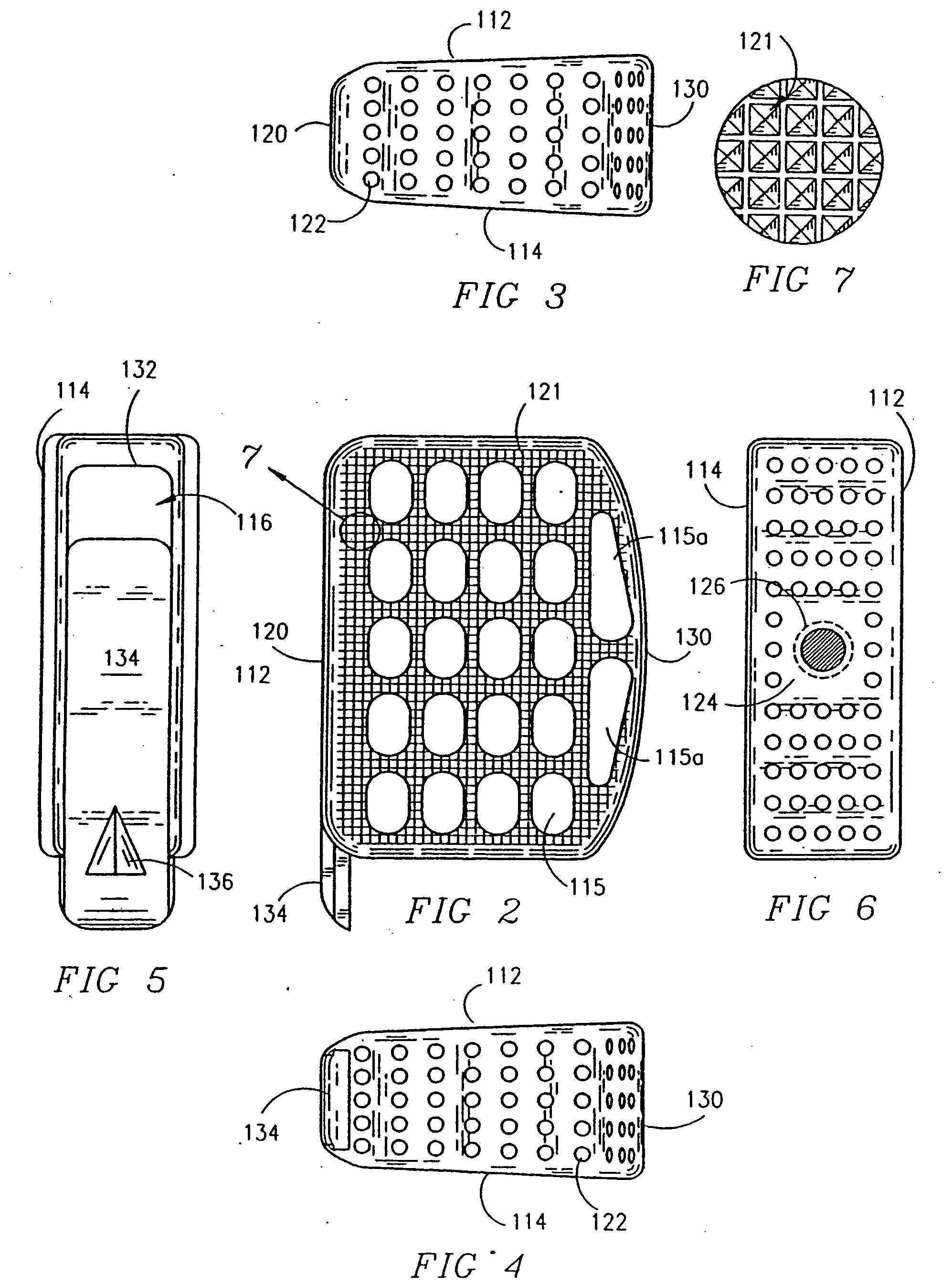Implant having arcuate upper and lower bearing surfaces along a longitudinal axis
- Summary
- Abstract
- Description
- Claims
- Application Information
AI Technical Summary
Benefits of technology
Problems solved by technology
Method used
Image
Examples
Embodiment Construction
[0059] Referring to FIGS. 1 through 7 the lordotic interbody spinal fusion implant of the present invention for use in the disc space between two adjacent vertebrae, generally referred to by the numeral 100, is shown. The implant 100 has a generally rectangular configuration, having an upper surface 112 and a lower surface 114. In the preferred embodiment, the upper and lower surfaces 112 and 114 of implant 100 are disposed in a converging angular relationship toward each other such that the implant 100 appears “wedge-shaped” from a side elevational view as shown in FIGS. 3 and 4. The upper and lower surfaces 112 and 114 have an interior surface which form a support structure for bearing against the endplates of the adjacent vertebrae between which the implant 100 is inserted. The angular relationship of the upper and lower surfaces 112 and 114 places and maintains the vertebrae adjacent to those surfaces in an angular relationship, creating and maintaining the desired lordosis of t...
PUM
| Property | Measurement | Unit |
|---|---|---|
| Perimeter | aaaaa | aaaaa |
Abstract
Description
Claims
Application Information
 Login to View More
Login to View More - R&D
- Intellectual Property
- Life Sciences
- Materials
- Tech Scout
- Unparalleled Data Quality
- Higher Quality Content
- 60% Fewer Hallucinations
Browse by: Latest US Patents, China's latest patents, Technical Efficacy Thesaurus, Application Domain, Technology Topic, Popular Technical Reports.
© 2025 PatSnap. All rights reserved.Legal|Privacy policy|Modern Slavery Act Transparency Statement|Sitemap|About US| Contact US: help@patsnap.com



